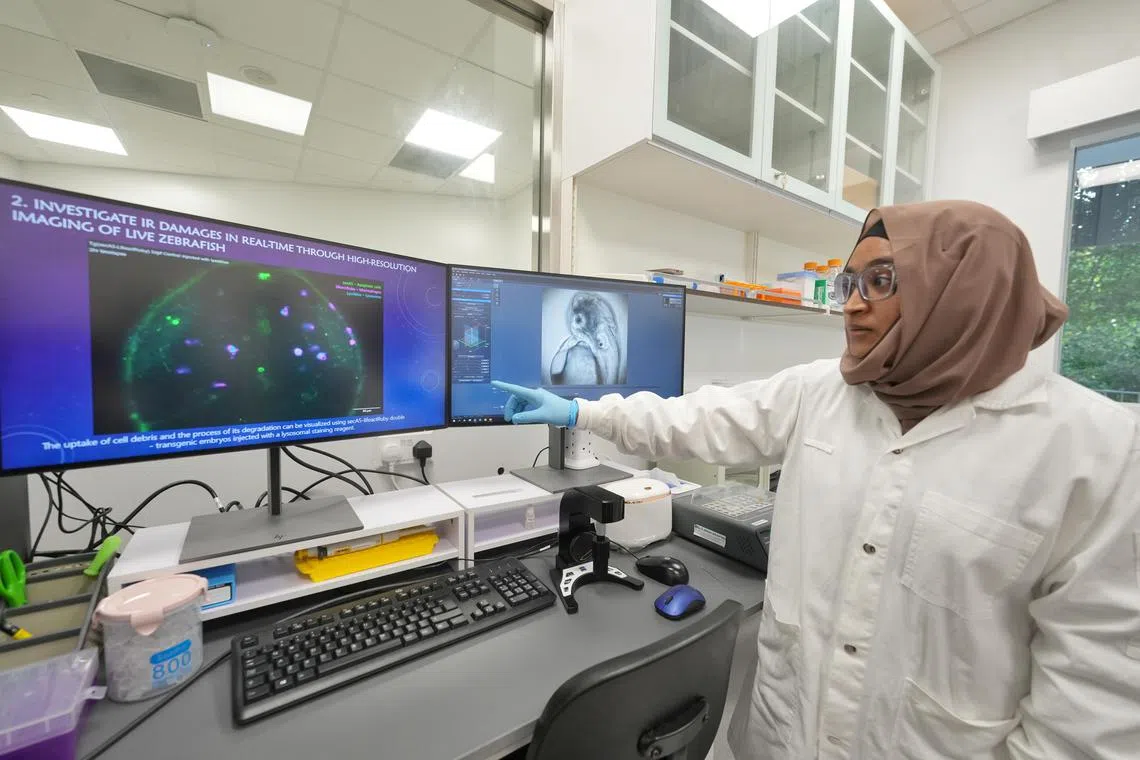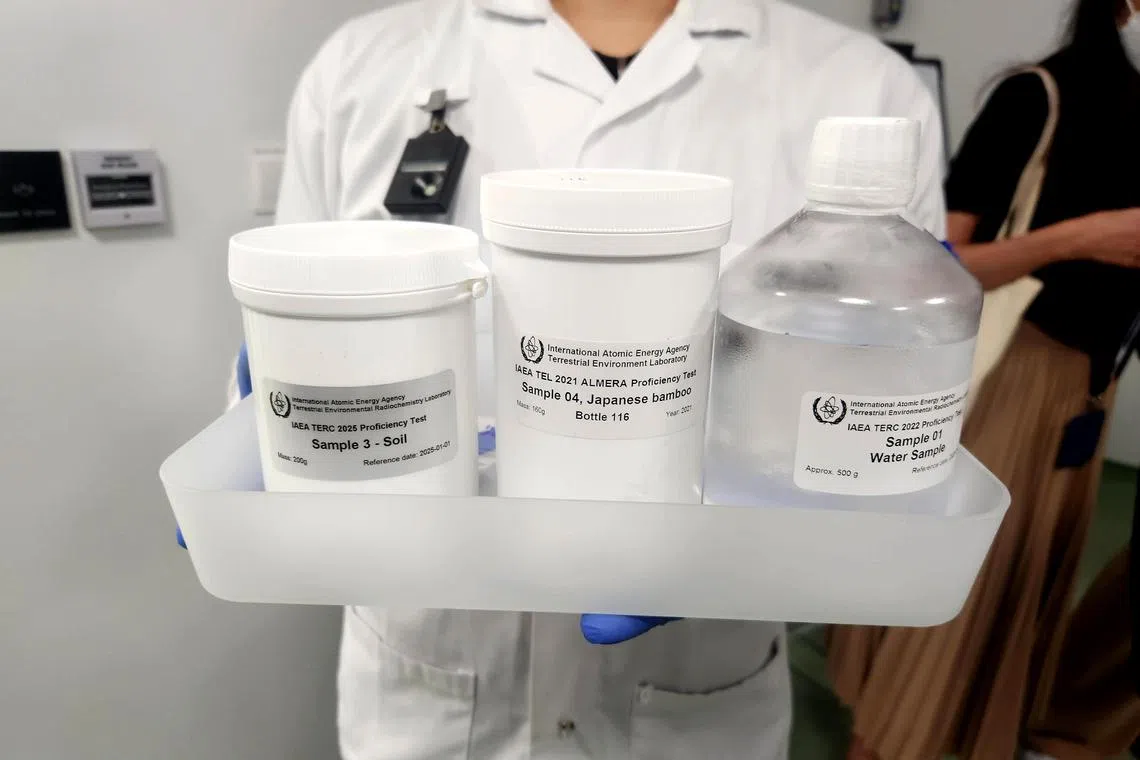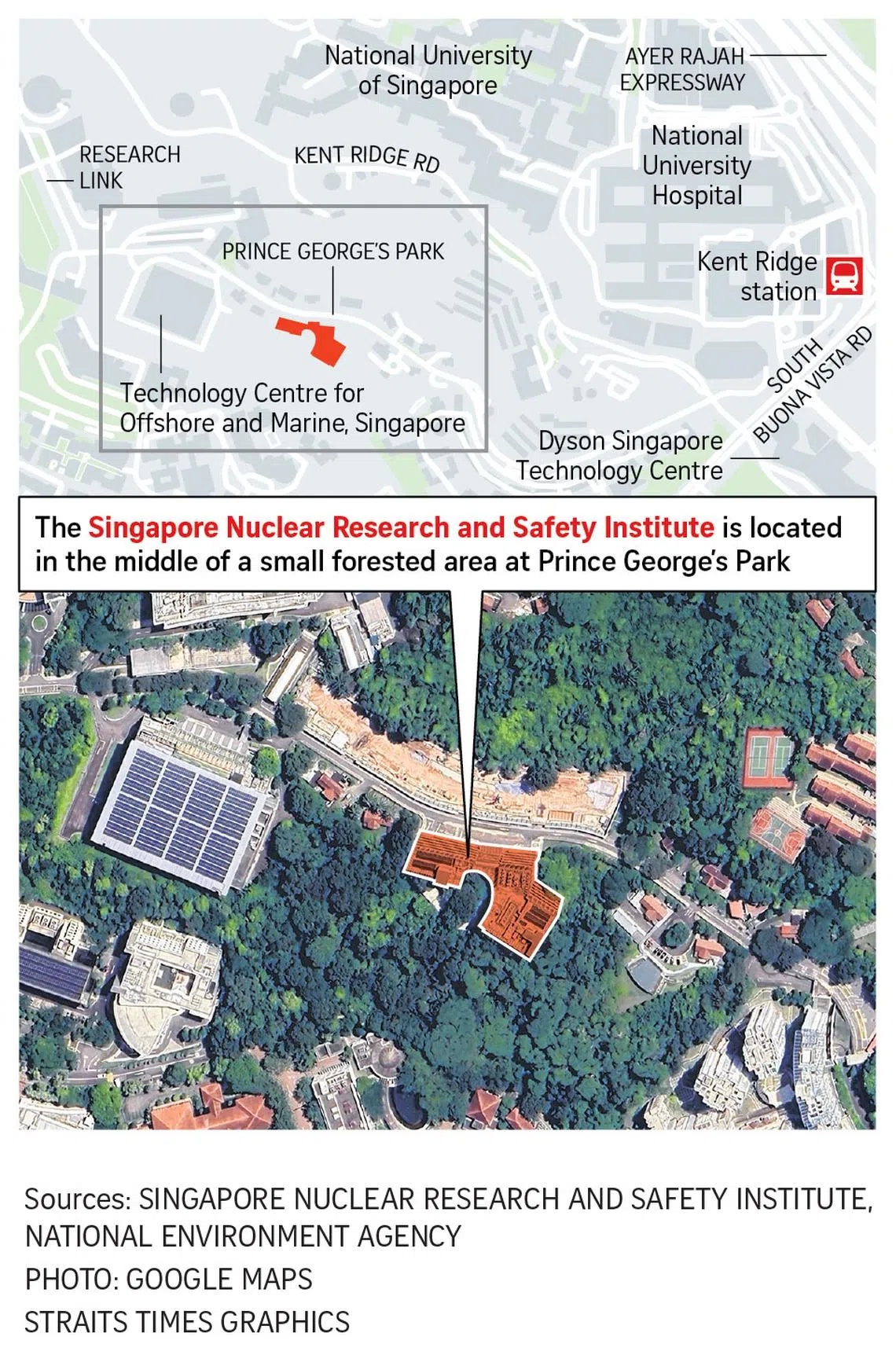A look inside the new Singapore Nuclear Research and Safety Institute at NUS
Sign up now: Get ST's newsletters delivered to your inbox

The five-storey building is located in the middle of a small, forested area at Prince George’s Park in the National University of Singapore.
ST PHOTO: AZMI ATHNI
Follow topic:
SINGAPORE - On July 11, the Singapore Nuclear Research and Safety Institute (SNRSI)
The five-storey building is located in the middle of a small, forested area at Prince George’s Park in the National University of Singapore.
It will house laboratories and facilities for researchers to study nuclear safety and the potential of tapping nuclear energy for the city-state.
There is also an office wing, where administrative offices, meeting and conference rooms are located.
The first floor of the institute will be open for public engagement activities, such as tours for students to learn more about radiation.

National Research Foundation chairman Heng Swee Keat and NUS president Tan Eng Chye (right) observing a cloud chamber that showcases radiation.
ST PHOTO: AZMI ATHNI
There is, for example, a cloud chamber – a container filled with super-saturated alcohol vapour – that makes radiation visible to the naked eye.
The Straits Times explores the other parts of the facility and its safety features.
Irradiators in the basement

Irradiators are enclosed in concrete walls that are 60cm to 65cm thick to block radiation.
PHOTO: LIANHE ZAOBAO
Radioactive activities and equipment that release radiation (irradiators) are housed here.
The equipment sends pulses of radiation to cell samples in biological experiments.
A separate irradiator run by the National Environment Agency (NEA) tests the accuracy of radiation detection meters used in local industries such as healthcare and manufacturing.
For safety, irradiators are enclosed in concrete walls that are 60cm to 65cm thick to block radiation.
Due to the terrain on which the building stands, the irradiators face the soil under the slope of Kent Ridge, away from people.
National Radiochemistry Lab
The lab run by NEA not only does routine environmental monitoring, but also maintains and acquires new rapid analytical capabilities for emergency response to potential radiological incidents.
Nuclear safety simulation labs
Researchers here create computer software to model virtual replicas of advanced reactors and run accident scenarios to assess their risks and what could happen during a meltdown.
Radiobiology labs

Scientists track how radiation affects zebrafish embryos and cell samples, which will help them understand how these effects should be enhanced or dampened, if necessary.
PHOTO: LIANHE ZAOBAO
Studies are done to assess the effects of chronic, low-dose radiation on the human body.
Scientists track how radiation affects zebrafish embryos and cell samples, which will help them understand how these effects should be enhanced or dampened, if necessary.
For example, a detoxifying drug has shown to rescue the embryo’s swim bladder from radiation’s effect.
Radiochemistry labs

Contaminated samples delivered by the International Atomic Energy Agency over the years.
ST PHOTO: SHABANA BEGUM
The facility can develop methods to rapidly detect elevated levels of radioactivity.
Every year, SNRSI and the National Radiochemistry Lab participate in proficiency tests organised by the International Atomic Energy Agency (IAEA), the United Nations nuclear watchdog, to test their capabilities in identifying and quantifying radioactive substances.


